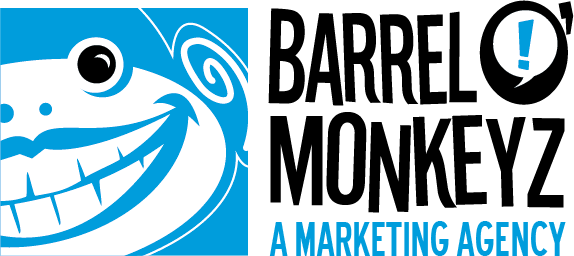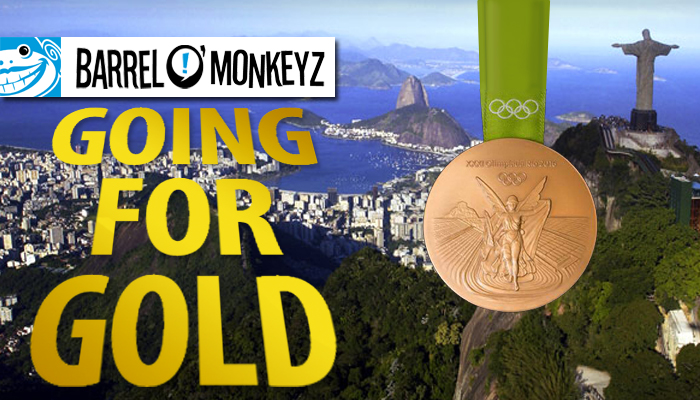In the minds of consumers when everything is equal about a particular product or service, what’s left? What distinguishes one brand from the rest of the chatter?
Quite often, the decision to buy a product or service is based on emotion—on the ability of a brand story to strike a particular chord with target buyers so that it spurs them on to take a desired action.
Think about the design of your brand: your logo, the colors you use, the fonts, the overall tone of your message. The structure of something—how it looks and sounds—conveys a message. Is it soft and fuzzy, slick and stylish, cold and sterile, earthy and lush, sleek and modern? What does it need to be to be true to your brand story and to connect to your target buyers emotionally?
Emotions in Motion
Emotion is a huge driver in our lives—and not just in personal relationships.
When athletes compete at the top of their sports, as they are doing right now at the Rio Olympics, quite often their physical attributes are equivalent. The emotional aspects of each athlete’s “game” are what drive him or her to excel and win gold, or that hinder performance. In fact, when it comes to sports, Psychology Today puts emotion “above motivation, confidence, intensity, and focus because emotions ultimately dictate how you perform throughout a competition.”
Emotions can also help or hinder the connection consumers have with certain brands. Emotions, says Psychology Today, “greatly influence and, in many cases, even determine our decisions,” in many aspects of our lives, which includes making purchases.
For example, emotions are the primary reason why we prefer certain brand name products over generics. Sure, there might be some taste/quality differences, but in many regards, generics are equivalent to their brand counterparts. The only difference is we have an emotional connection to the brand name (“Advil,” for example, which is probably what your doctor’s office always gives you) vs. the generic version, “Ibuprofen.”
In 2014, Nielsen set out to determine how people make their car buying decisions. Certainly financials play a role, especially among first time buyers, but remove financial considerations from the equation and, according to Nielsen, car purchase decisions are made almost entirely for emotional reasons: people either just love to drive and want a car that they love to drive in, or they want the vehicle to reflect/be worthy of their social status.
Consider viral videos (and yes, we are all guilty of watching cat videos, though I tend to prefer monkeys myself). That said, a video almost always goes viral not because of a feature or particular element, but because of the emotions it evokes: happiness, excitement, awe.
Emotions Trump Facts
In Marketing 101, we learn that great marketers focus on benefits, not features. In other words, they focus on the emotions (the benefits your brand delivers for consumers) rather than a laundry list of your product’s or service’s features. For example, your children’s toy product might come with the batteries included (a feature), but how does that compare to letting parents know your child will be able to power up your fully-charged toy right out of the box (the benefit of instant gratification)?
Brand design is no different.
Check out the blog “Olympics Advertisers Are Wasting Their Sponsorship Dollars” by BOM BF Denise Lee Yohn who explores how competing brands are getting vastly different results based on their advertising’s ability to connect emotionally to target audiences.
Cutest Monkey Ever (not including the Barrel O’Monkeyz team, of course!)
Go for the Gold with Your Brand Design
What does your brand design say about you? Does it help tell your story and your benefits to consumers? Is it consistent with your brand values and the promises you make to customers?
What emotions does it evoke in people who hear about/see your brand? What tone does it convey?
A good brand design can bring your story to life in every aspect your brain can imagine, your eye can see, and your heart can feel. Corporate branding and websites, product packaging, collateral materials, catalogs, tradeshow booths and banners—you name it, your design can make or break your business success.
In the spirit of this Olympic season, isn’t it time you go for the gold with your brand design?
A good place to start is by downloading Barrel O’Monkeyz “10 Design Brief Essentials” so you can begin to capture in writing everything you need to complete your brand design project . . . and more.
Paul June is King Monkey of BARREL O’MONKEYZ, a full-service digital media and marketing group specializing in more creativity, ideas, and fun for action sports marketing, sportswear marketing, sports product marketing, active lifestyle consumer products, health product marketing, and brands in San Diego and Southern California.


Trackbacks/Pingbacks